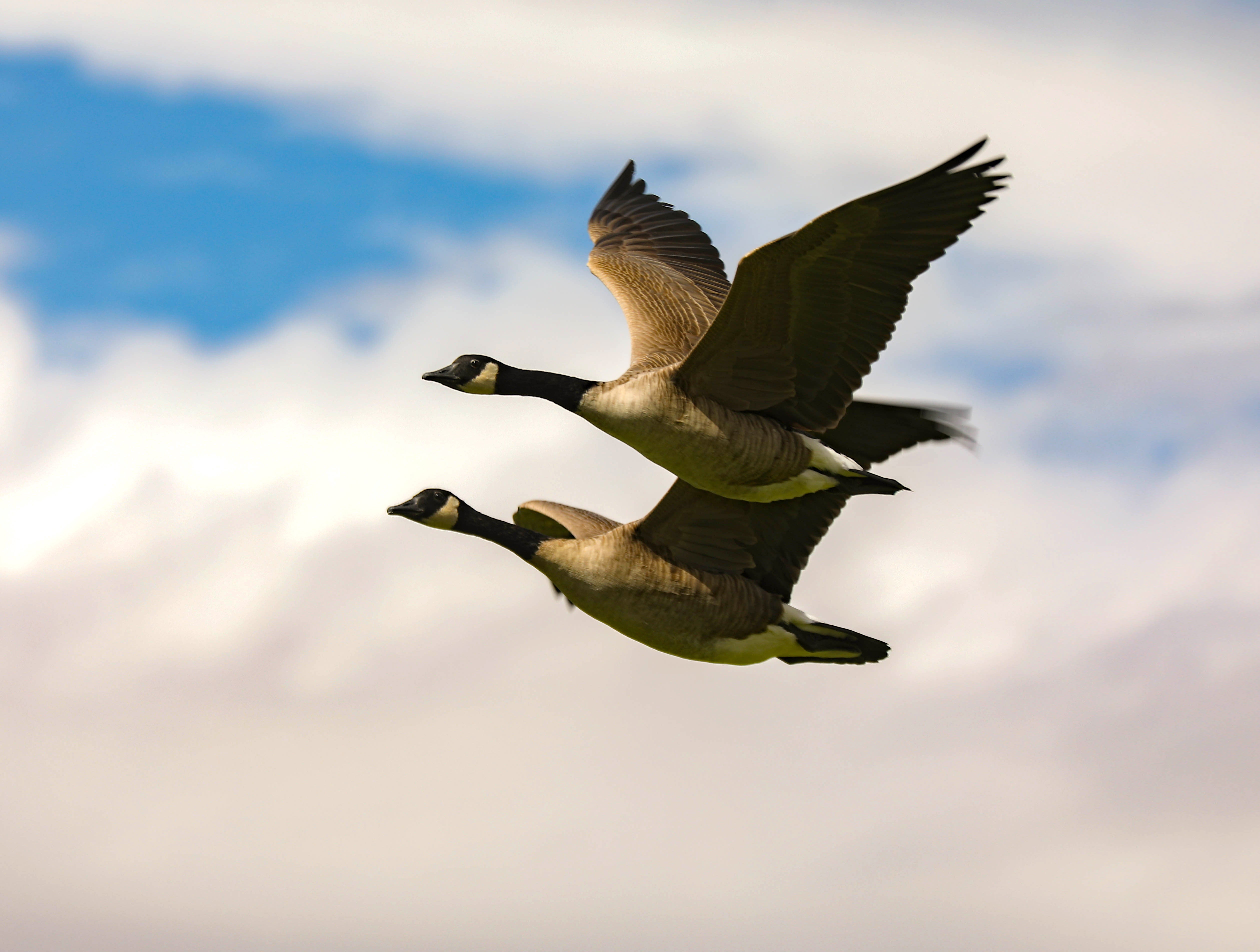Canada Geese open waterfowl hunting season
Published 7:11 am Saturday, August 28, 2021

- A pair of Canada Geese fly through the air. Photo courtesy of Catherine Harris / USFWS
|
Getting your Trinity Audio player ready...
|
NATCHEZ — Residential Canada Geese make their homes on golf courses, suburban homes with ponds and reservoirs. September is the beginning of crop harvest, which means these geese have more food options.
They take to the skies to feed in fields and on new vegetation springing up from muddy shorelines. According to the Mississippi Department of Wildlife, Fisheries and Parks, Mississippi has 31,000 resident Canada Geese. Waterfowl biologist Darrin Hardesty said they offer an opportunity for waterfowl hunters to start the season.
“By September, their fledglings can fly. Around harvest season, more birds are moving around the state,” Hardesty said. “How far they go depends on habitat availability. They may not even move out of an area. A lot of our residential geese hang out where water and food habitats are, so they don’t need to travel far.”
Geese feed on grasses and can grow to be as big as 14 pounds. According to the MDWFP, Canada Geese are capable of eating four pounds of grasses a day. Additionally, they can produce two pounds of droppings a day.
Scouting plays a role in how successful an opening day hunt can go. He said Canada Geese feed in cow pastures, open fields, and on the banks of oxbow lakes, so you can find the local areas they frequent.
“They will get into a daily movement pattern. They will move from a rest area and move daily to a food source,” Hardesty said. “You can watch those patterns as goose season approaches and you can set up accordingly.”
He said the geese roost on the ground instead of trees. The best way to pinpoint geese is to watch for them in the morning or late in the evening. Hunters can watch for their v formation in the sky as they fly from one location to another.
Location is crucial in scouting geese, but hunters also need to understand the wind direction in their hunting locations. It can affect how Canada Geese will fly into a field, he said.
“They want to fly into the wind when they are going to land,” Hardesty said. “You want the wind at your back. You would have the geese decoys behind you in a field. They are a big bird, and they can be hard to bring down.”
He said he recommends using a 12-gauge shotgun to fire 3-inch or 3 1/2 inch shells with a BB-sized shot. T and BBB-sized shot are other options for hunting geese.
According to federal law, Hunters must plug their shotguns — so their capacity is three shells, one in the chamber, two in the magazine— while hunting migratory birds. While hunting waterfowl, hunters must use non-toxic shot.
He said he recommends hunters use geese decoys, but they do not have to be full-body or fancy animatronic one.
“You just need a shell decoy,” Hardesty said. “A few decoys can increase your odds. They respond pretty well to calling as well.”






